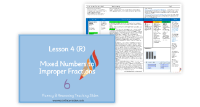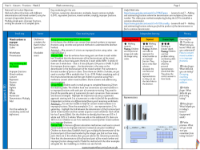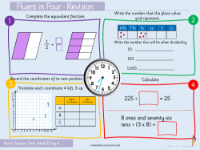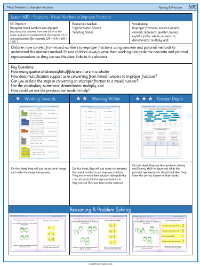Fractions - Mixed numbers to improper - Presentation
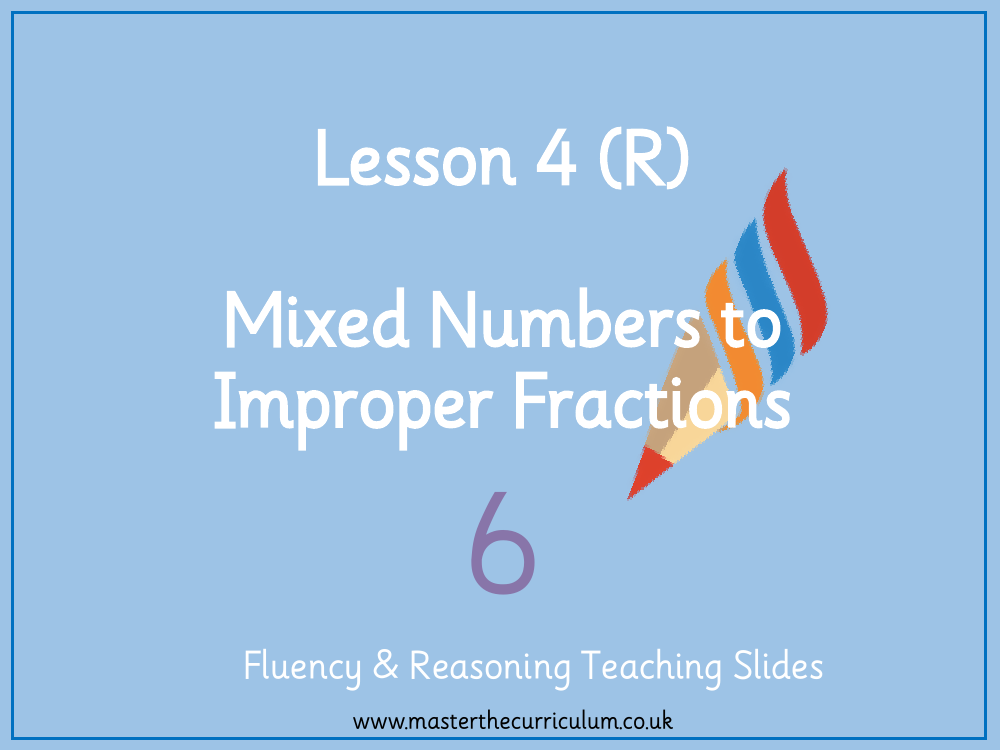
Maths Resource Description
The focus of the lesson is on converting mixed numbers to improper fractions, a crucial skill in the understanding of fractions. Students begin by revisiting definitions from the previous lesson, discussing what constitutes a mixed number and an improper fraction with their peers. The class then moves on to practical activities, where they are tasked with transforming mixed numbers into their improper counterparts using visual aids like cubes and bar models. For instance, they learn that one whole is equivalent to a certain number of eighths, and through a series of steps, they discover how to combine these eighths with additional parts to form an improper fraction. The process is reinforced through examples such as converting 2 and 3/4 into 11 quarters, and 3 and 3/5 into 18 fifths, illustrating the method of multiplying the number of wholes by the denominator and then adding the numerator to find the total.
Further activities challenge the students to apply the conversion method to different mixed numbers, encouraging them to explore various possibilities and identify errors in reasoning. For example, they are presented with scenarios where children have incorrectly converted mixed numbers, such as 3 and 3/4, into improper fractions, and they must pinpoint and explain the mistakes made. Through independent work, students use cubes to visually represent the conversion process and draw their findings in their books. They also engage in discussions about the relationship between different fractions and wholes, and how multiplication aids in the conversion process. The lesson aims to solidify their understanding of fractions by using terms like numerator, denominator, multiply, and add, and by demonstrating how to use visual models to facilitate comprehension.
